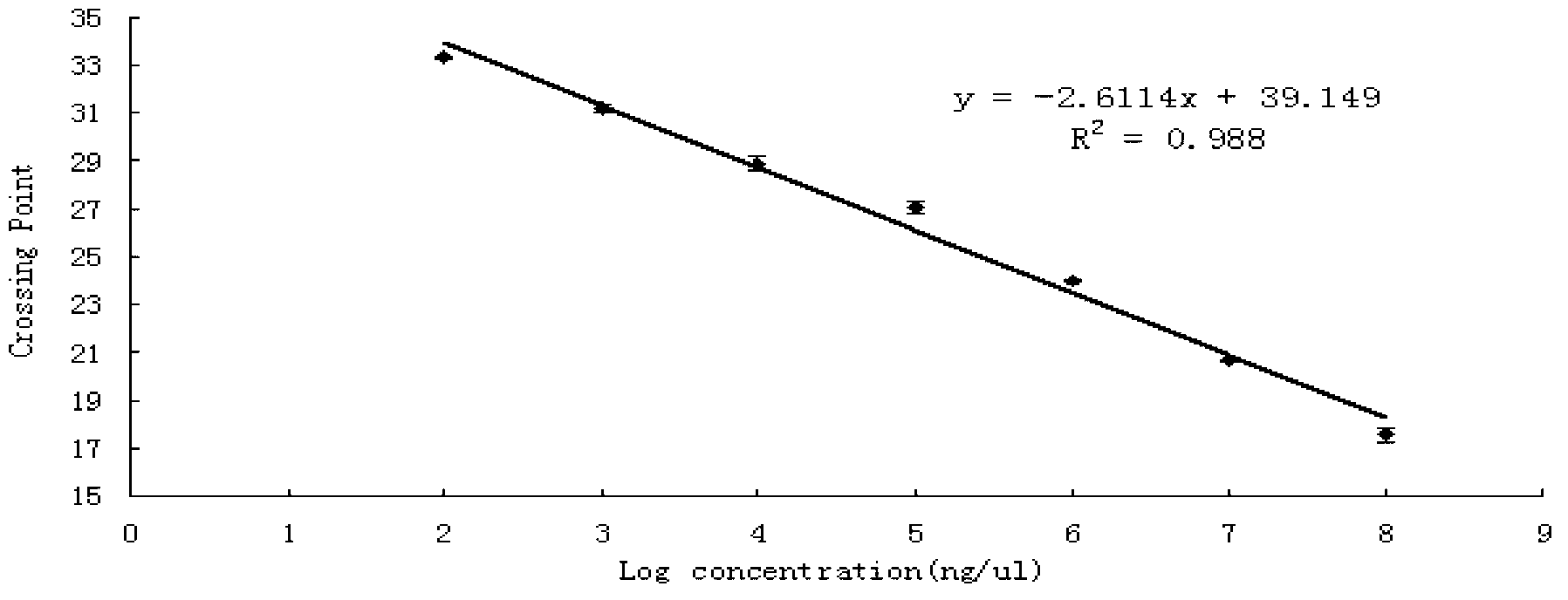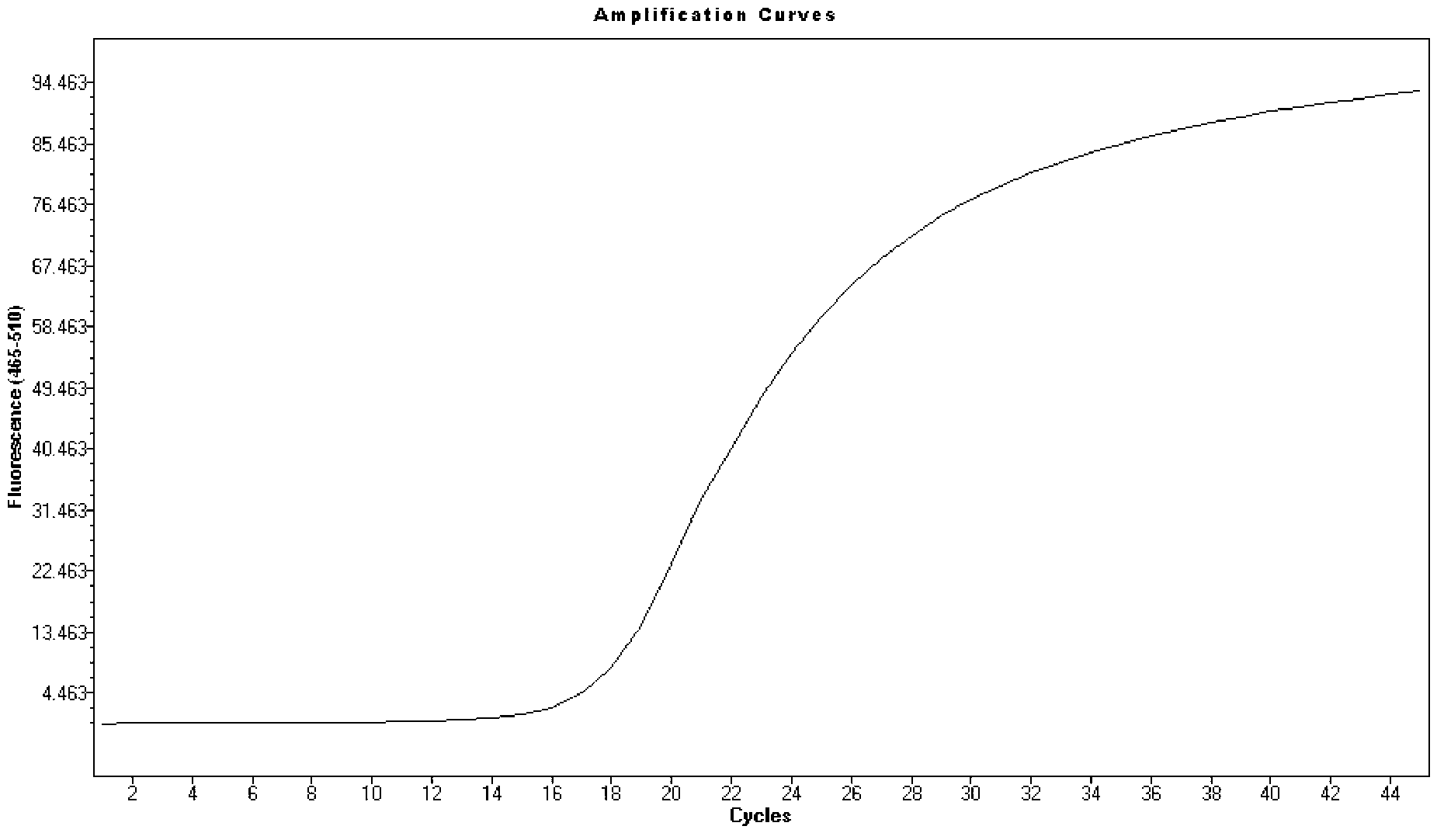Method for detecting vibrio parahemolyticus through combination of unlabelled fluorescent PCR (Polymerase Chain Reaction) and HRMA (High Resolution Melting Analysis)
A technology for labeling fluorescent and hemolytic vibrio, which is applied in the field of microbial detection, can solve the problems of cumbersome operation, short reagent storage period, and complicated operation, and achieve the effects of avoiding cross-contamination, shortening the detection cycle, and simplifying the detection process
- Summary
- Abstract
- Description
- Claims
- Application Information
AI Technical Summary
Problems solved by technology
Method used
Image
Examples
Embodiment 1
[0066] Use the method of non-labeled fluorescent PCR of the present invention in conjunction with HRMA to detect Vibrio parahaemolyticus in aquatic products:
[0067] DNA extraction
[0068] Weigh 25 g of the sample by aseptic operation, add it to 225 mL of 3.5% NaCl BPW, and incubate at 36±1°C for 18 hours. Take 1.5 mL of the culture and centrifuge at 10,000 rpm for 2 min; add 500 μL of TE buffer to the precipitate, repeatedly pipette to resuspend it, add 30 μL of 10% SDS and 15 μL of proteinase K, mix well, and incubate at 37°C for 1 h; L NaCl, mix well, then add 80ul CTAB / NaCl solution, mix well and then incubate at 65°C for 10min; add an equal volume of phenol / chloroform / isoamyl alcohol and mix well, centrifuge for 4-5min, transfer the supernatant to a Add 0.6-0.8 times the volume of isopropanol to a new tube, mix gently until the DNA precipitates, and the precipitate can be centrifuged slightly; after the precipitate is washed with 1mL of 70% ethanol, the ethanol is disc...
PUM
 Login to View More
Login to View More Abstract
Description
Claims
Application Information
 Login to View More
Login to View More - R&D
- Intellectual Property
- Life Sciences
- Materials
- Tech Scout
- Unparalleled Data Quality
- Higher Quality Content
- 60% Fewer Hallucinations
Browse by: Latest US Patents, China's latest patents, Technical Efficacy Thesaurus, Application Domain, Technology Topic, Popular Technical Reports.
© 2025 PatSnap. All rights reserved.Legal|Privacy policy|Modern Slavery Act Transparency Statement|Sitemap|About US| Contact US: help@patsnap.com



